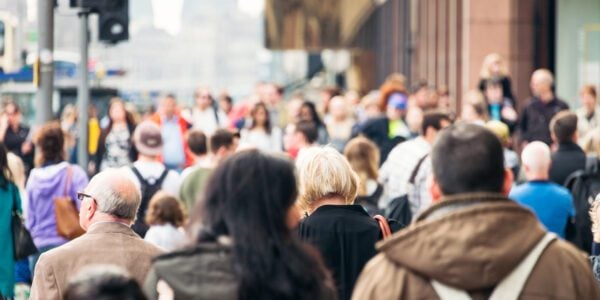Employees’ salaries currently attract thousands of pounds more in tax each year than the incomes of people who are self-employed or working through their own company.
A new report from the IFS, funded by the Nuffield Foundation, argues that this is unfair and pushes people towards working through their own business rather than as employees. At the same time, the tax system discourages investing in a company and taking risks.
The IFS researchers argue that the parts of the UK tax system that dictate how different forms of income are taxed are not fit for purpose. The report offers both a long-term solution to these problems and practical steps towards achieving a fairer tax system.
Current problems with the tax treatment of business owners and investment
There are now about 5 million people getting income from self-employment and about 2 million company owner-managers. That’s one in five of the UK’s workforce working through their own business. Their numbers have been growing rapidly – up from about 4 million and 1 million respectively 20 years ago – in part because their incomes are taxed at much lower rates than the incomes of employees doing similar work.
For a job generating £40,000, tax in 2020–21 is £3,300 higher if the job is completed through an employment contract rather than by someone who is self-employed, and £4,300 higher than if they work through their own company. This is mostly because employees’ salaries are subject to employers’ National Insurance contributions whereas other incomes are not. The differences can be even greater because we continue to levy much lower tax rates on capital gains than on earned income – something that overwhelmingly benefits the wealthiest, with almost two-thirds of taxable capital gains realised each year being made by people realising gains of over £1 million that year.
Preferential tax rates on capital gains, dividends and self-employment income are not well targeted at encouraging entrepreneurial risk-taking and investment. The biggest giveaways go to those who make big profits without investing much money.
Those who make substantial investments in a business for a modest return or who risk making a loss are penalised by the tax system. This is the group most likely to be deterred from investing by the tax system.
In the wake of the COVID-19 crisis, higher taxes seem likely. Removing preferential tax rates would be a natural place to look. But simply raising taxes on income from business when the system is so poorly designed risks creating more inequity and stifling the economic growth that we need.
The long-run solution: higher tax rates and a reformed tax base
The policy challenge is to tax capital income and gains at the same rates as labour income without creating barriers to saving and investment. As things stand, simply increasing tax rates on income from business, to bring them closer to tax rates on employment, would worsen the existing distortions to investment and risk-taking. So as well as increasing tax rates on business incomes, we need to change the tax base – the definition of what is taxed – to give full deductions for amounts saved or invested and allow losses to be offset against as broad a set of income as possible. There are various ways the tax base changes could be achieved.
With a reformed tax base, tax rates could be aligned across all forms of income while investment incentives would be improved.
New ideas for practical steps in the right direction
Moving straight to the long-run solution would be a big reform creating a lot of winners and losers, and might be hard to achieve in the short run. So the report illustrates a range of smaller reform packages which would improve the system compared with today and would be steps on the way to a better system. There is no one ‘right’ path to the long-run ideal; the report discusses a number of possible options, including, for example:
- Tax rates on dividends and capital gains could be increased to standard income tax rates while people who buy new shares in a company – including their own company – could get income tax relief on the investment, paying tax when they get their money out instead (like with a pension). This would remove disincentives to invest in a company while also ensuring tax is paid at full income tax rates on returns to that investment.
- Tax rates on self-employment income could be increased, but self-employed people who make a loss and have no other income that year could be allowed to deduct the loss from income from their next job or business venture. This would align tax rates more closely while reducing disincentives for risky entrepreneurial activity.
- Tax rates on dividends and capital gains could be increased but indexation of capital gains for inflation reintroduced, so that only above-inflation gains were taxed. This would both reduce avoidance incentives and reduce disincentives to save and invest.
These types of packages move away from blanket tax reductions for anyone whose income is labelled as ‘business income’ towards targeted measures that reduce the tax penalty for those who invest or take risks.
There is no pain-free way to fix the current tax system: any meaningful reform will create losers as well as winners. But keeping the status quo is also a choice – one that unfairly penalises ordinary employees and investors, and creates inefficiency and administrative costs that make us all poorer.”Stuart Adam, a senior research economist at IFS and an author of the report
Helen Miller, a deputy director at IFS and also an author of the report, said:
“Better-designed taxes allow us to raise more revenue with less economic harm. This should be even more important in the wake of the COVID-19 crisis. Policymakers could choose reforms that would reduce disincentives for businesses to invest, employ people and take risks, all of which would aid the recovery and help us to ‘build back better’. The government has struggled to get support to some of the self-employed during this crisis. But that doesn’t mean we should permanently keep across-the-board preferential tax rates for business owner-managers. If there is concern about low-paid workers, we should reduce taxes for employees and the self-employed equally, not levy higher taxes on employment that push it out of the reach of many.”
Alex Beer, Welfare Programme Head at the Nuffield Foundation, said:
“The sobering descriptions in this report highlight the unfairness, inefficiency and complexity inherent in the current approach to taxing different forms of income, specifically the different treatment of employment and labour income compared to business ownership and capital incomes. This penalises employees and distorts investment decisions, to the detriment of social well-being. But it doesn’t need to be this way, the authors, who listened to and engaged a wide audience of stakeholders throughout the study, set out clear pathways for reform that would result in a fairer, more equitable, system.”






















































